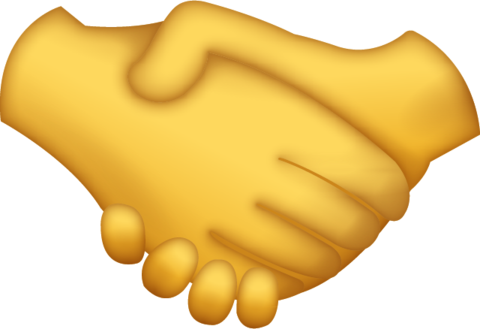Money Orders Explained – How Does Money Order Work?

Money orders are a convenient way to send money, especially when you don’t have a bank account or if you don’t want to use a credit or debit card. They’re also a good alternative to cash because they can be traced easily.
Here, we will explain what a money order is, how it works, and some of the things you should know before you buy one.
In today’s world, you can get a money order service at most post offices and banks. They’re also available at some grocery stores, convenience stores, and check-cashing locations.
To get a money order, you’ll need to provide some personal documents with the amount of money you want to send, along with the name and address of the recipient. You’ll also need to pay a small fee, typically around $0.50-$1.00 although this can be higher.
What Is a Money Order?
To further explain how do money orders work it is important to know beforehand that a money order is a document, usually issued by a post office or bank, that allows the person named on it to receive cash on demand.
The money order cash system was created in the nineteenth century as a way to send money without having to use the mailing system.
This payment order has a pre-specified amount. They can be purchased with cash or debit cards, but not with credit cards. They can be used to pay bills or send funds to someone else.
If you wondering how to fill out a money order, all you need to do is when you purchase one, put the recipient’s name, address, and the amount of money you are sending. You will also need to sign it and once the recipient receives it, they will sign it as well.
In case you are asking how to cash a money order you received, all you need to do is go to the local post office, bank, or check-cashing location and exchange it for cash. Don’t forget to bring an ID or some other document with you as well.
How Do Money Orders Work?
Once you provide the issuer with the amount of money you want to send, along with the recipient’s name and address, you will then be given a receipt. This receipt will need to be kept safe until the recipient receives the money.
Once the order is received, they will need to take it to a cash-out location. The issuer will likely also charge a small fee for this service.
Where to Get Money Orders?
By now you know what they are but where can you get a money order?
Well, they can be purchased at a variety of locations, including post offices, grocery stores, and convenience stores. Many banks and credit unions also sell money orders.
Their cost can vary depending on the location and the amount you plan on sending but is typically between $0.50 and $5.00.
When filling out a money order, be sure to use black or blue ink so that the information is legible and once this is done you can mail it to the recipient using regular first-class postage.
Money orders are generally safe because they can be traced if they get lost along the way.
However, it’s always a good idea to keep your receipt in case you need to cancel the money order or dispute it for any reason.
Another common question we must answer is- do money orders expire?
Generally speaking, money orders don’t expire, but they can become old so that they just fall under abandoned property regulations or the value is eaten with fees. It is usually best to read the fine print as the issuer always needs to state this information.
Money Orders: Pros and Cons
There are a few pros and cons to using money orders. We will lay them out for you so that down the road, you will know if using this transfer system is a good choice for you.
One pro is that they can be used to send money internationally. Another one is that money orders are a safe way to send money since they can’t be lost forever.
A con of using money orders is that even if they can’t be lost completely, it will be difficult to track them if they get lost in the mail. Another con is that some businesses don’t accept them.
Pros
- A very convenient way to send money.
- It can be used for paying bills or sending money to friends and family members.
- Money orders can be tracked. You can usually find out when the money order was purchased and who it was purchased from.
- They are relatively inexpensive. The fees for purchasing and sending a money order are usually much lower than the fees associated with other payment methods, such as credit cards or wire transfers.
Cons
- They are typically not replaceable if it’s lost or stolen.
- They can sometimes be tricky to cash if you don’t have a bank account. You may need to go to the post office or the place where you purchased one.
- There is still a fee associated with purchasing a money order even though it is not high, so it’s important to factor that in when deciding whether or not to use one.
How Much Do Money Orders Cost?
A money order is a document, similar to a check, used for making payments. Money orders are most commonly used when the payer does not have a checking account or when the payee does not accept checks. They are prepaid, so they are only issued after the payer has paid the full amount of it.
While money orders are a convenient way to make payments, they still have a fee that must be paid. The cost of them varies depending on the issuer, but it is typically less than $5 for domestic money orders and $10 for international money orders.
Are Money Orders Safe?
When you’re looking to make a payment, you have a few options. You can use cash, write a check, or get a money order.
Money orders are often seen as a safe and reliable way to make payments, but are they really?
A money order is a document that acts as a prepaid certificate for the amount of money it’s worth.
The issuing institution is backing them up, so there’s little risk that the recipient won’t be able to cash the money order. This is why they are considered to be safe and secure methods of payment.
Additionally, money orders can’t be altered once they’ve been issued, so there’s no risk of fraud or counterfeiting.
When Does a Money Order Make Sense?
There are a few occasions when it might make sense to use a money order instead of other methods of payment. For example, if you need to send cash but don’t feel comfortable sending it through the mail, a money order is a good option.
They can also be helpful when you’re making a rent or utility payment and don’t have a bank account.
Finally, if you’re buying something from someone who doesn’t accept credit cards, a money order is one way to pay.
If you ever need any help, use this guide we provided you with so you will know how to get a money order.
However, there is a difference between a cashier’s check vs money order that you should be aware of. Cashier’s check is more suitable if you plan on sending a larger amount of money but they also have larger fees associated with them. They offer more protection than money orders but require you to have access to a financial institution. People usually use them if they need to send more than $1,000.
Bottom Line
A money order is a piece of paper that functions much like a check. It’s a safe and easy way to send cash, either in the U.S. or internationally.
Money orders are often used when sending money to someone who doesn’t have a bank account, such as a friend or family member. They’re also popular when shopping online from sellers who don’t accept credit cards.
The bottom line is that money orders are very convenient, whether you’re in the U.S. or abroad. Just be sure to keep your receipt in case you need to track the order you sent or if you want to cancel it.


